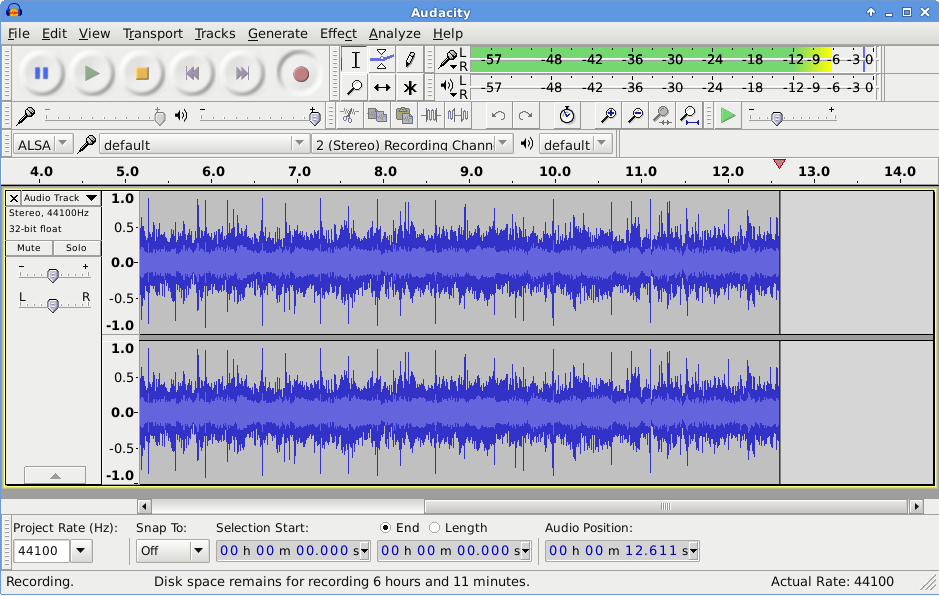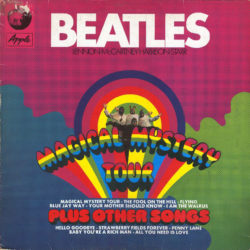OOPS! What Happened To The Mix???
by Stu Rutherford, October 19, 2020
Back when I was a teenager circa 1979, I was a huge Beatles fan and was slowly adding their albums to my meager LP collection. I knew early on about the differences between the UK and US releases and was seeking out and buying the UK versions. I had a few good sources for import Beatles LPs at the time. There were various record dealers at the US-1 Flea Market in New Brunswick. There was a guy who ran a mail order catalog called Lord Sitar Records (later as LSR records). And lastly, there was Korvettes department store in Woodbridge. They had an awesome record department which stocked lots of import Beatle LPs from Japan, UK etc. It was there that I found a German copy of the ‘Magical Mystery Tour’ LP. This version of the LP at the time was unique as it was the only place where one could get true stereo versions of three of the tracks. These days, when it comes to ’60s music, I tend to prefer the mono mixes but back in my youth I wanted stereo mixes. When I first put the LP on to listen, I was
wearing headphones, listening via my mom’s Lafayette receiver as I didn’t have my own stereo at the
time. I noticed the music was in mono and the mix sounded strange like one of the channels was out.
Quickly realizing what was wrong, I noticed that the headphone cable wasn’t fully inserted into the jack.
The record sounded normal once I plugged it in properly. However, I realized that the wrong mix I heard
could not have been the result of simply one channel being out as that didn’t jibe with which parts of the
song couldn’t be heard in the mix. It was the parts in the center of the stereo spectrum that disappeared,
not the the parts panned to one of the sides. I realized that I could pull the headphone plug out of the jack
partially and find the sweet spot where I could listen to these unique wonky mixes and pick out parts in
songs that were buried in the normal mix. In doing that I discovered that it was definitely “cranberry
sauce” as opposed to “I buried Paul” being spoken at the end of “Strawberry Fields Forever”. There’s some joking around between John & George taking the piss out of the lyrics to “Ob-La-Di, Ob-La-Da” some of which can be heard in the regular mix. Now I could hear other bits that were burried. Tracks would end up instrumental if all of the vocals were panned to the center and the music panned to the
sides. Anyway, at the time, I just assumed this was a unique situation caused by a faulty headphone jack
connection.
It wasn’t until 1997 when I bought my first computer and had internet access that I learned that what I was
hearing on my mom’s old receiver was out-of-phase stereo. Out-of-phase stereo (or OOPS as it is
commonly abbreviated) is a phenomenon which occurs when one channel of the stereo signal is out of
phase with the other. When that happens, the audio info that is common to both channels (panned
towards the center) is canceled out. I learned that this could be achieved by wiring your speakers in an
alternate way. I tried it and it worked. These days, with mixing software such as Audacity, one can
invert the polarity one of the channels to achieve this. Back in the day, however, I figured out how to rig
a set of RCA cables that when attached between my tape deck (or CD recorder) and my receiver would
allow me to record OOPS mixes. One of the catalysts for this was the ‘Anthology 2’ version of The
Beatles’ “And Your Bird Can Sing”. This version features a different, more folk-rock arrangement than
the released version. It also features John and Paul giggling and not taking things seriously in one of their
vocal overdubs which was enjoyable to listen to…..once! After that, the giggling kind of ruined a cool
alternate version of the track. I had heard that making an OOPS version eliminated just the silly vocal
track and not the other vocals or instruments so I had to create one for myself.

Going forward a few years, I ended up engineering live bands at WFMU for several years. At the end of one session, the DJ was playing back the session for the band to hear and someone in the group wanted to know if the vocals could be brought down and the “beats” brought up in the mix. I forget whether he was referring to the drums or the entire backing track. These sessions were recorded and mixed live to 2-track stereo in real time at the session so remixing was not possible. As this was a pre-recorded session for future broadcast, I told them I’d see what I could do but didn’t think I’d have much success.
I remembered the OOPS cable that I created years ago and realized that I had the vocals panned in the center of the stereo mix I created at the session. In those days I had no mixing software and was doing all my mixing of my own home recordings on my Tascam digital 24 track recorder. What I did was load the session onto tracks 1 and 2 of the Tascam and then play back the session while simultaneously recording from the units’ output jacks through the OOPS cable to tracks 3 and 4. I now had an in-phase and an out-of-phase version of the session perfectly synched up that could be played back simultaneously. Combining the In-phase and out-of-phase signals allowed me to control how much of the center channel volume was lost. The louder I made the OOPS tracks in the mix, the bigger the decrease in volume in the center of the
stereo image. The bottom line is that it allowed me to lower the vocals a bit. I couldn’t get too crazy with this adjustment as the kick drum and most likely the bass would’ve been panned center as well and those
would also decrease in volume along with the vocals. It turns out the band ended up preferring my
“remix” and that’s what ended up being broadcast.


